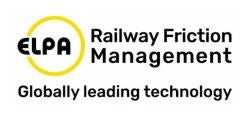A lack of detailed knowledge and adequate perspectives on railway lubrication technology often prevents decision makers from making well informed investment decisions.
Almost two decades ago, ELPA assumed the role of technology leader. Since then, it has also been at the forefront in educating the market. Its educative role is continuing with its newly published web page. There are several aspects to railway friction management that have not been published and expanded on in one place before.
For the first time, insight is provided into the essential qualities of top of rail friction modifiers (TOR FM). You will learn that composite materials play a crucial role in managing friction and the devices only offer harmonious support in applying the material. Finally, it is the reliable interconnectedness and performance of the two that is crucial if a solution is to guarantee results.
Friction management has an important budgetary implication. Efficient rail lubrication technologies should not be considered a cost, because they save money and payback periods can be short. Testimonials are shared that prove railways are largely under served with efficient and safe rail friction management technology.
Several published videos show the results that can be achieved in high frequency noise elimination while maintaining the required adhesion for safe traffic. Braking distances are not compromised, even in rainy conditions. Braking tests show that after the application of the Composite Hardly-Fluid Compounds (CHFC), the braking distances are sometimes even shorter.
The environmental aspect is another topic explained in a never-before-seen detail. Savings on CO₂ emissions can be reduced due to reduced wear and lower requirements for rail replacements. For the first time, a global perspective is shared on how much rail friction management could be harnessed to help mitigate climate change. Lubricants have their own requirements and testing methods to verify their environmental acceptability. It is not just the formal acceptability of friction modifiers that plays a role, but crucially, the quantity that a technology applies since these materials inevitably end up in nature.
For more information, please follow the links on our profile.

